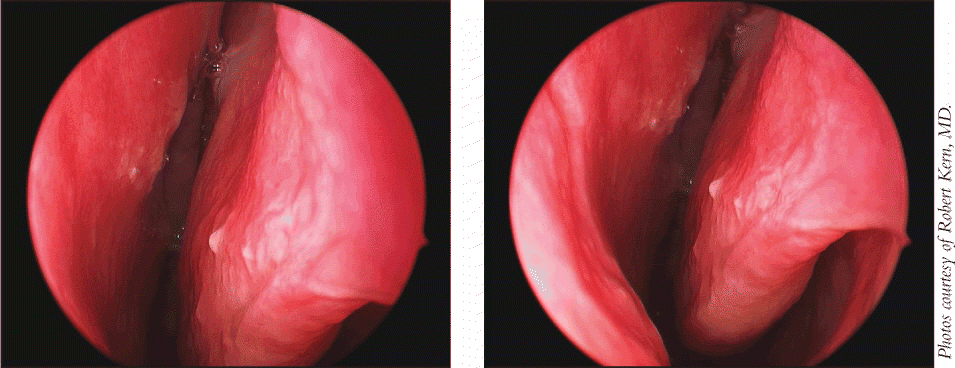The researcher behind much of that work, Claus Bachert, MD, Professor of Otorhinolaryngology at the University of Ghent, reviewed some of his findings at this spring’s Rhinology World in Philadelphia. Strong IgE reactions to Staphylococcus aureus, he said, have been found in patients with nasal polyps, with double the number of colonies of the bacteria found in patients with nasal polyps-and double the number of IgE reactions to those colonies-compared with controls. The number of reactions in patients with both nasal polyps and asthma has been found to be nearly four times that in controls.
Explore This Issue
October 2009The association between staph and nasal polyps was also seen in another study in which 11 out of 21 patients with chronic rhinosinusitis with nasal polyps were IgE-positive to the bacteria, compared with none of the 10 patients with chronic rhinosinusitis without polyps and none of the nine controls.
But Dr. Bachert said a distinction needs to be made. If you find staphylococcus, it doesn’t necessarily mean that you have immune response because the immune response in terms of IgE was independent of whether we find it or not, Dr. Bachert said. We have to differentiate between the presence of staphylococcus and the response.
It’s the communication between the enterotoxin and the immune system that is important, he said.
In 2006, a study (Hellings PW et al. Clin Exp Allerg 2006;36:1063-71) set out to test the effect of staphylococcus in mice that had already had allergic reactions by ovalbumin. Inflammation was four to five times greater in the mice in which the allergic reaction had been brought about than in those in which it had not.
What you see is that it doesn’t make much difference whether you apply the enterotoxin intranasally or intrabronchially, Dr. Bachert said. You get a tremendous upregulation of eosinophils.
Researchers also have found that the combination of ovalbumin and staphylococcus (SEB) is a powerful instigator of inflammation. If you just apply the SEB, nothing happens, if you apply the ovalbumin intranasally, nothing happens, Dr. Bachert said. But if you apply them together, there’s a strong specific IgE response to ovalbumin. This is linked to eosinophilic inflammation.
It was also found that in mice in which this reaction was happening, there was also an increased in airway resistance. I think what you get once you have this started, this proves with every little bit of SEB you add to that, you get a further shift into the direction of T-cell activation, especially TH-2 cell activation, Dr Bachert said. And you get a downregulation of T-regulatory cytokines.
Treating Staph
Staphylococcus isn’t seen as the actual cause of the polyps, but they do a lot of the damage, he said. We see S. aureus enterotoxins as disease modifiers, Dr. Bachert said. We don’t think that they induce nasal polyps. But they just use the inflammation that is already there and amplify it strongly into a much more severe and chronic disease.

Leave a Reply